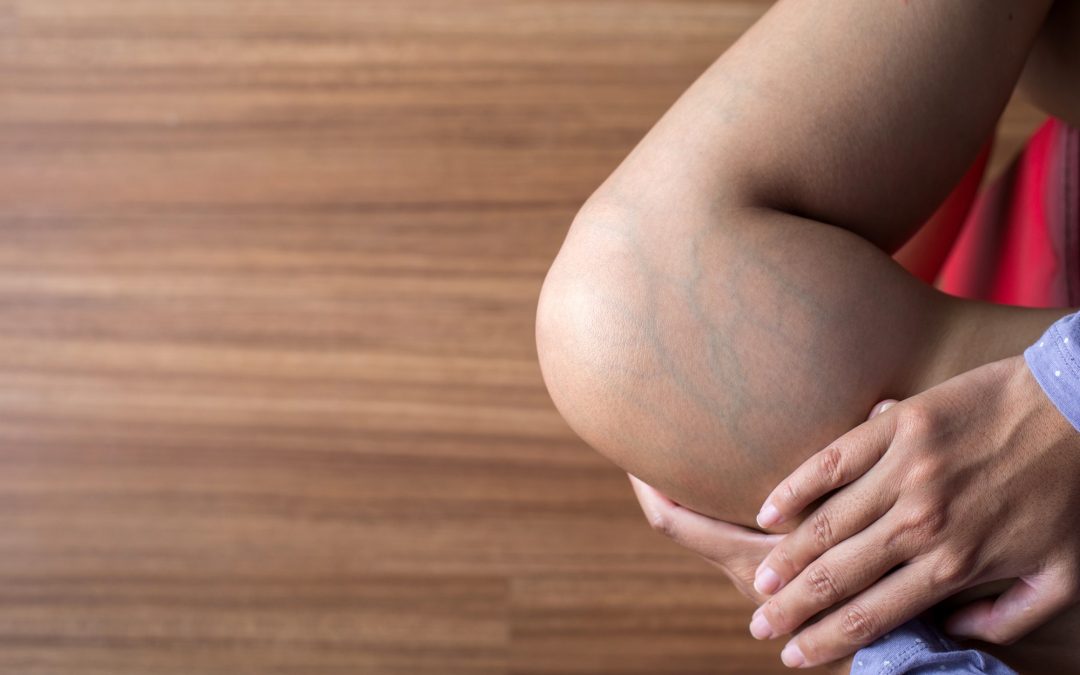Varicose veins can be more than a cosmetic problem. Learn about varicose veins pain, how to get help, and feel relief from any symptoms.
Varicose veins are easy to spot: they’re enlarged vein that are generally purple or blue, have a rope-like appearance, and are typically in the legs and feet. It’s a condition that affects millions of Americans (about one-third of those being ages 40 through 80).
When the valves in the veins start malfunctioning and can’t bring blood back to the heart effectively, it can cause varicose veins.
Varicose Veins Symptoms
While varicose veins are only a cosmetic problem for some people, others may experience some pain. However, there is no evidence that these veins cause any discomfort – they may in fact cause no pain at all.
On the other hand, less visible veins that have damage may cause extreme pain and discomfort. The feelings of pain and discomfort are a result of various symptoms, such as muscle cramps, achy, heavy legs, and a burning feeling in the legs.
In addition to these symptoms, you may feel throbbing in the legs, swelling around the ankles and calves, and discomfort around specific vein areas. Because blood vessels tend to dilate during higher temperatures, the symptoms become more evident during warm days.
Moreover, since more blood pools around the ankles as the day passes, you may feel the symptoms come on stronger at the end of the day. Lastly, sitting or standing for extended periods of time can also aggravate the symptoms of these less visible, damaged veins.
How to Feel Better
Three main things you can do to experience relief from these symptoms is to elevate your legs, exercise and stretch your legs, and use cold water on them.
 1. Elevation
1. Elevation
If you’re experiencing pain and want immediate relief, then elevate your legs above your heart. When sitting down, rest them on a footstool, ottoman, or table. At night, place three or four pillows under your feet to elevate them.
By elevating your feet, it will be easier for blood to circulate throughout your lower body and heart. In addition to elevating them, keep them that way for a good amount of time (about 15 minutes) to help ease the pain.
2. Exercise and Stretching
Something else that can be helpful is stretching your calves through short exercise. For example, if your job entails sitting or standing for long periods of time, try changing positions every half hour and regularly bending your knees.
During long trips, try flexing your feet on a frequent basis, specially in circumstances where leg room is small. Lastly, drinking lots of water and staying hydrated can support healthy circulation, which helps with discomfort.
3. Cold Water
If you experience leg pain and discomfort at the end of the day, you can put them in cold water to ease that pain. Because cool temperatures shrink blood vessels, showering your legs in cold water can help alleviate swelling and inflammation.
Furthermore, it can bring relief during leg cramps, feelings of heaviness, and general discomfort. In contrast, heat can negatively affect damaged veins, so don’t take hot baths if you’re feeling pain in the legs and feet as it can cause pain.
How to Prevent Pain
Pain from damaged veins can be chronic, so it’s better to prevent it from happening than treating it. Doing things like wearing compression stockings, walking regularly, and taking circulation supplements can help.
One of the best circulation supplements on the market is L-arginine Plus. The powder supplement contains powerful ingredients such as l-arginine, l-citrulline, and other key vitamins and minerals to promote blood flow.
These ingredients help boost nitric oxide production, a molecule that dilates blood vessels and increases circulation throughout the body. Moreover, they come in three tasty flavors that make it easy to drink daily in the mornings.
If you want a safe and effective circulation supplements that helps promote circulation and prevent conditions like varicose veins, try L-arginine Plus.

